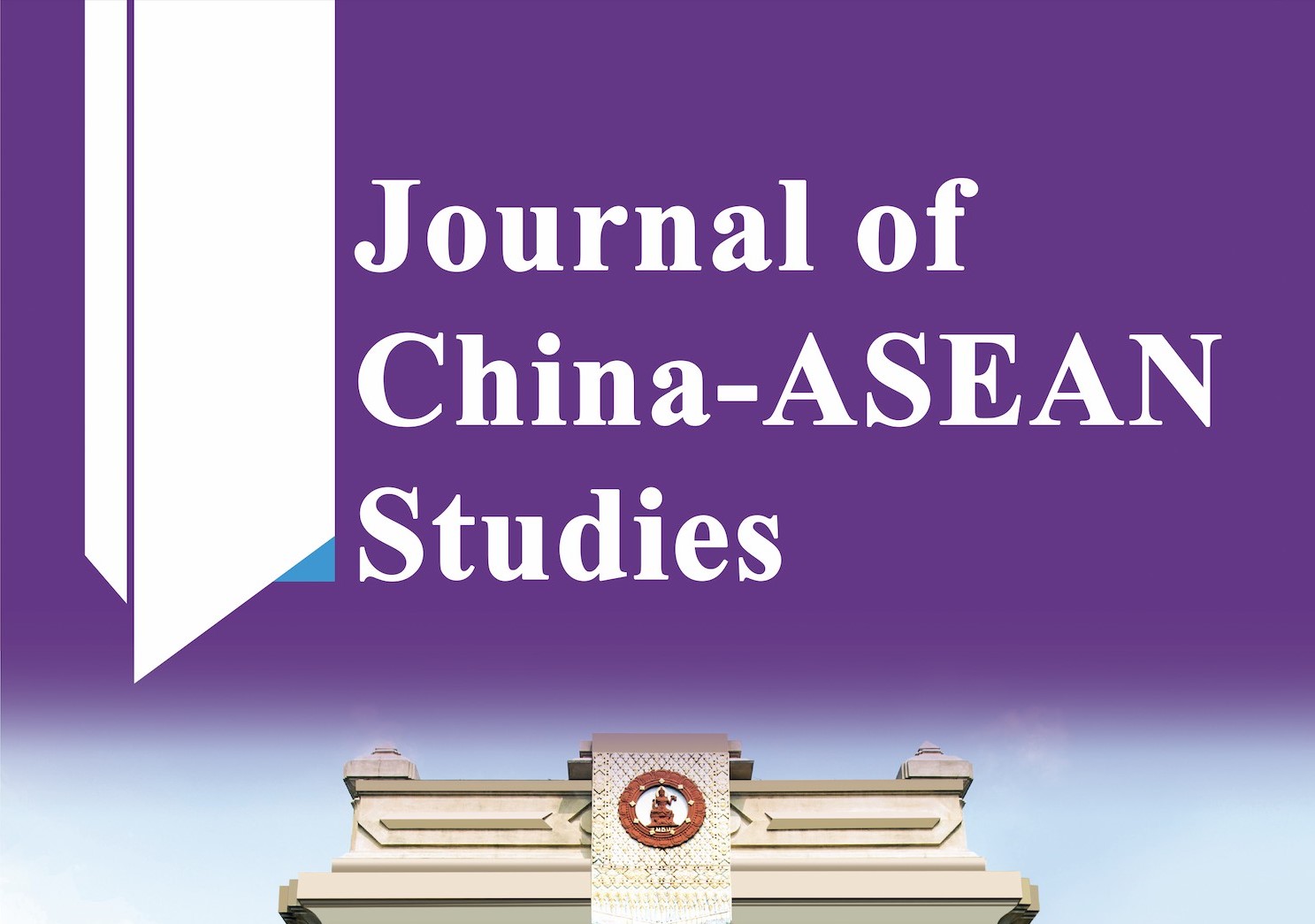Intelligent Manufacturing Leads the Green Trend: An Empirical Exploration of Manufacturing Companies Listed on China's Shanghai and Shenzhen A-Share Markets
关键词:
Intelligent Manufacturing, Corporate Environmental Investment, Technological Innovation摘要
In the transformative era of industry driven by intelligent manufacturing, its capacity to shape corporate environmental responsibility stands as a critical concern. This study draws upon a decade of data from manufacturing firms listed on China's Shanghai and Shenzhen A-share markets, encompassing the years 2010 to 2022. Employing a two-way fixed-effects model, an empirical examination is conducted to assess the influence of intelligent manufacturing on investments in corporate environmental governance. The results reveal a significant and positive impact of intelligent manufacturing on the enhancement of corporate environmental governance investment, with the key driver being the increased investment in technological innovation by corporations. To substantiate the robustness of these findings, a series of rigorous checks were applied, encompassing two-stage least squares (2SLS) estimation, propensity score matching (PSM), the lagging of independent variables, and the system generalized method of moments (System GMM). Even amidst these exacting evaluations, the conclusions of the study have proven to be consistently robust. The implications of this research are dual-fold: it offers empirical evidence to guide corporate strategies in the domain of intelligent manufacturing and provides policymakers with a theoretical framework to advocate for industry greening and the formulation of sustainable environmental policies. This study, therefore, contributes to both the corporate strategy discourse and the policy-making arena by providing insights grounded in evidence of the pivotal role intelligent manufacturing plays in advancing environmental stewardship.
参考
Ahuja, G., & Lampert, C. M. (2001). Entrepreneurship in the large corporation: A longitudinal study of how established firms create breakthrough inventions. Strategic Management Journal, 22(6-7), 267-294. https://doi.org/10.1002/smj.176
Aluko, O. A., Opoku, E. E. O., & Ibrahim, M. (2021). Investigating the environmental effect of globalization: Insights from selected industrialized countries. Journal of Environmental Management, 281, 111892. https://doi.org/10.1016/j.jenvman.2020.111892
Aragón-Correa, J. A., & Sharma, S. (2003). A Contingent Resource-Based View of Proactive Corporate Environmental Strategy. Academy of Management Review, 28(1), 71-88. https://doi.org/10.5465/amr.2003.8925233
Arellano, M., & Bover, O. (1995). Another Look at the Instrumental Variable Estimation of Error-Components Models. Journal of Econometrics, 68(1), 277-297. https://doi.org/10.1016/0304-4076(94)01642-D
Barney, J. B. (1991). Firm resources and sustained competitive advantage. Journal of Management, 17(1), 99-120. https://doi.org/10.1177/014920639101700108
Bloom, N., Genakos, C., Martin, R., & Sadun, R. (2010). Modern Management: Good for the Environment or Just Hot Air? The Research Online Documents on Economics (120), 551-572. https://doi.org/10.1111/j.1468-0297.2010.02351.x
Blundell, R., & Bond, S. (1998). Initial Conditions and Moment Restrictions in Dynamic Panel Data Models. Journal of Econometrics, 87, 115-143. https://doi.org/10.1016/S0304-4076(98)00009-8
Brynjolfsson, E., & Hitt, L. M. (2000). Beyond Computation: Information Technology, Organizational Transformation and Business Performance. Journal of Economic Perspectives, 14(4), 23-48. https://doi.org/10.1257/jep.14.4.23
Chen, H., Yang, D., Zhang, J. H., & Zhou, H. (2020). Internal controls, risk management, and cash holdings. Journal of Corporate Finance, 64, 101695. https://doi.org/10.1016/j.jcorpfin.2020.101695
Coase, R. H. (1937). The Nature of the Firm. Economica, 4(16), 386-405. https://doi.org/10.1111/j.1468-0335.1937.tb00002.x
Cui, Y., Kara, S., & Chan, K. C. (2020). Manufacturing big data ecosystem: A systematic literature review. Robotics and Computer-Integrated Manufacturing, 62, 101861. https://doi.org/10.1016/j.rcim.2019.101861
Evans, P. C., & Annunziata, M. (2012). Industrial Internet: Pushing the boundaries of minds and machines. Boston: General Electric.
Fazzari, S. M., Hubbard, R. G., & Petersen, B. C. (1988). Financing Constraints and Corporate Investment. Brookings Papers on Economic Activity, (1), 141-195. https://doi.org/10.3386/w2387
Fu, H., Jiang, Q., Cifuentes-Faura, J., & Chen, Q. (2024). Corporate environmental governance and firm value: Beyond greenwashing for sustainable development. Environment, Development and Sustainability. https://doi.org/10.1007/s10668-023-04375-7
Giret, A., Garcia, E., & Botti, V. (2016). An engineering framework for service-oriented intelligent manufacturing systems. Computers in Industry, 81(2), 116-127. https://doi.org/10.1016/j.compind.2016.02.002
Iqbal, N., Xu, J. F., Fareed, Z., Wan, G., & Ma, L. (2022). Financial leverage and corporate innovation in Chinese public-listed firms. European Journal of Innovation Management, 25(1), 299-323. https://doi.org/10.1108/EJIM-07-2020-0304
Jaffe, A. B., Trajtenberg, M., & Henderson, R. (1993). Geographic Localization of Knowledge Spillovers as Evidenced by Patent Citations. The Quarterly Journal of Economics, 108(3), 577-598. https://doi.org/10.2307/2118401
Jiang, J. X., Wang, L. Y., & Wang, K. P. (2019). Big N auditors and audit quality: new evidence from quasi-experiments. The Accounting Review, 94(1), 205-227. https://doi.org/10.2308/accr-52106
Kang, Y.-S., & Kim, B.-Y. (2012). Ownership structure and firm performance: Evidence from the Chinese corporate reform. China Economic Review, 23(2), 471-481. https://doi.org/10.1016/j.chieco.2012.03.006
Karabegovic, I., & Husak, E. (2018). The fourth industrial revolution and the role of industrial robots with focus on china. Journal of Engineering and Architecture, 6(1), 67-75. https://api.semanticscholar.org/CorpusID:208233986
Keller, W. (2002). Geographic Localization of International Technology Diffusion. American Economic Review, 92(1), 120-142. https://doi.org/10.1257/000282802760015630
Klassen, R. D., & McLaughlin, C. P. (1996). The impact of environmental management on firm performance. Management Science, 42(8), 1199-1214. https://doi.org/10.1016/j.jclepro.2021.126057
Kumar, M., & Rodrigues, V. S. (2020). Synergetic effect of lean and green on innovation: A resource-based perspective. International Journal of Production Economics, 219, 469-479. https://doi.org/10.1016/j.ijpe.2018.04.007
Lee, J., Bagheri, B., & Kao, H. A. (2015). A Cyber-Physical Systems Architecture for Industry 4.0-Based Manufacturing Systems. Manufacturing Letters, 3(1), 8-13. https://doi.org/10.1016/j.mfglet.2014.12.001
Li, J., Wu, Z., Yu, K., & Zhao, W. (2024). The effect of industrial robot adoption on firm value: Evidence from China. Finance Research Letters, 60, 104907. https://doi.org/10.1016/j.frl.2023.104907
Li, L. (2018). China's Manufacturing Locus in 2025: With a Comparison of "Made-in-China 2025" and "Industry 4.0". Technological Forecasting and Social Change, 135, 66-74. https://doi.org/10.1016/j.techfore.2017.05.028
Li, L. S., Shi, X. A., & Liu, J. (2019). 40 Years of Manufacturing in China: Intelligentization Process and Outlook. China Soft Science, (1), 1-9+30. (in Chinese)
Liu, Y. (2023). Impact of industrial robots on environmental pollution: evidence from China. Scientific Reports, 13, 20769. https://doi.org/10.1038/s41598-023-47380-6
Lu, N., Zhou, W., & Dou, Z. W. (2023). Can intelligent manufacturing empower manufacturing? – An empirical study considering ambidextrous capabilities. Industrial Management & Data Systems, 123(1), 188-203. https://doi.org/10.1108/IMDS-11-2021-0718
Lyu, W., Wang, T., Hou, R., & Liu, J. (2023). Going green and profitable: The impact of smart manufacturing on Chinese enterprises. Computers & Industrial Engineering, 181, 109324. https://doi.org/10.1016/j.cie.2023.109324
Machado, C. G., Winroth, M. P., & Ribeiro Da Silva, E. H. D. (2020). Sustainable Manufacturing in Industry 4.0: An Emerging Research Agenda. International Journal of Production Research, 58(5), 1462-1484. https://doi.org/10.1080/00207543.2019.1652777
Nakandala, D., Yang, R., Lau, H., & Weerabahu, S. (2023). Industry 4.0 technology capabilities, resilience and incremental innovation in Australian manufacturing firms: a serial mediation model. Supply Chain Management, 28(4), 760-772.
https://doi.org/10.1108/SCM-08-2022-0325
Orlitzky, M., Schmidt, F. L., & Rynes, S. L. (2003). Corporate Social and Financial Performance: A Meta-Analysis. Organization Studies, 24(3), 403-441. https://doi.org/10.1177/0170840603024003910
Osei Opoku, E. E., & Aluko, O. A. (2021). Heterogeneous effects of industrialization on the environment: Evidence from panel quantile regression. Structural Change and Economic Dynamics, 59, 174-184. https://doi.org/10.1016/j.strueco.2021.08.015
Porter, M. E., & Van der Linde, C. (1995). Toward a New Conception of the Environment-Competitiveness Relationship. Journal of Economic Perspectives, 9(4), 97-118. https://doi.org/10.1257/jep.9.4.97
Roodman, D. (2009). A note on the theme of too many instruments. Oxford Bulletin of Economics and Statistics, 71(1), 135-158. https://doi.org/10.1111/j.1468-0084.2008.00542.x
Rothaermel, T., & Deeds, L. (2004). Exploration and Exploitation Alliances in Biotechnology: A System of New Product Development. Strategic Management Journal, 25(3), 201-221. https://doi.org/10.1002/smj.376
Sarbu, M. (2022). The impact of industry 4.0 on innovation performance: Insights from German manufacturing and service firms. Technovation, 113, 102415.
Shapiro, J. S., & Walker, R. (2018). Why is Pollution from U.S. Manufacturing Declining? The Roles of Environmental Regulation, Productivity, and Trade. American Economic Review, 108(12), 3814-3854. https://doi.org/10.1257/aer.20151272
Tao, F., Zuo, Y., Xu, L. D., et al. (2014). IoT-based intelligent perception and access of manufacturing resource toward cloud manufacturing. IEEE Transactions on Industrial Informatics, 10(2), 1547-1557. https://doi.org/10.1109/TII.2014.2306397
Wang, Z., Zhang, T., Ren, X., & Shi, Y. (2024). AI adoption rate and corporate green innovation efficiency: Evidence from Chinese energy companies. Energy Economics, 132, 107499. https://doi.org/10.1016/j.eneco.2024.107499
Wei, X., Jiang, F., Chen, Y., & Hua, W. (2024). Towards green development: The role of intelligent manufacturing in promoting corporate environmental performance. Energy Economics, 131, 107375. https://doi.org/10.1016/j.eneco.2024.107375
Wintoki, M. B., Linck, J. S., & Netter, J. M. (2012). Endogeneity and the Dynamics of Internal Corporate Governance. Journal of Financial Economics, 105, 581-606. https://doi.org/10.1016/j.jfineco.2012.03.005
Yu, F., Wang, L., Li, X. (2020). The effects of government subsidies on new energy vehicle enterprises: The moderating role of intelligent transformation. Energy Policy, 141. https://doi.org/10.1016/j.enpol.2020.111463
Zhang, Q., Zhang, F., Mai, Q. (2022). Robot adoption and green productivity: Curse or Boon. Sustainable Production and Consumption, 34, 1-11. https://doi.org/10.1016/j.spc.2022.08.025
Zheng, P., Wang, H., Sang, Z., Zhong, R. Y., Liu, Y., Liu, C., et al. (2018). Smart manufacturing systems for Industry 4.0: conceptual framework, scenarios, and future perspectives. Frontiers in Mechanical Engineering, 13, 137-150. https://doi.org/10.1007/s11465-018-0499-5
Zhong, R. Y., Xu, X., Klotz, E., & Newman, S. T. (2017). Intelligent manufacturing in the context of industry 4.0: a review. Engineering, 3(5), 616-630.






